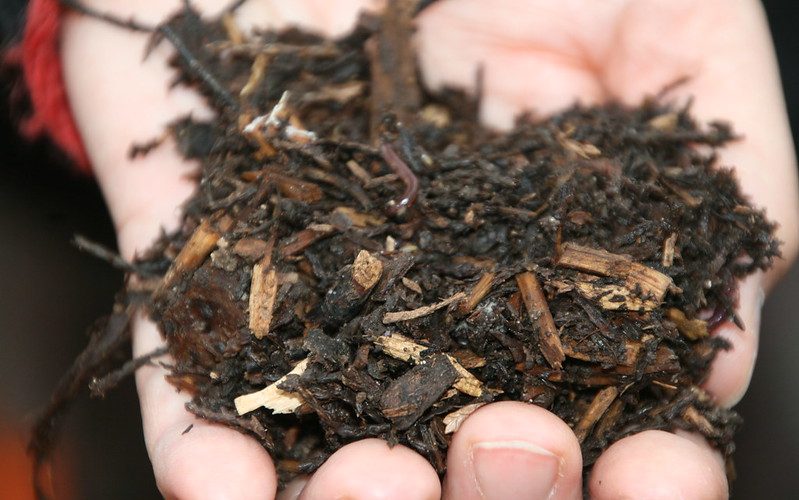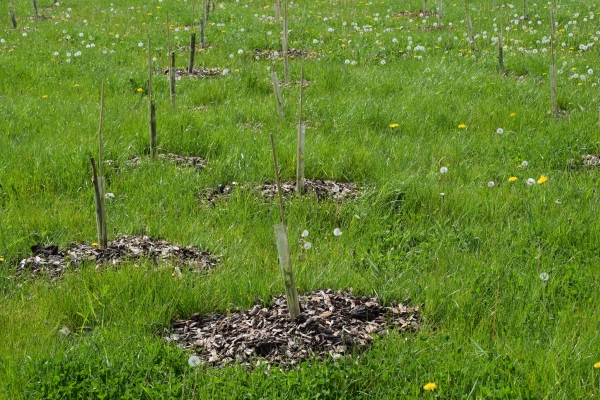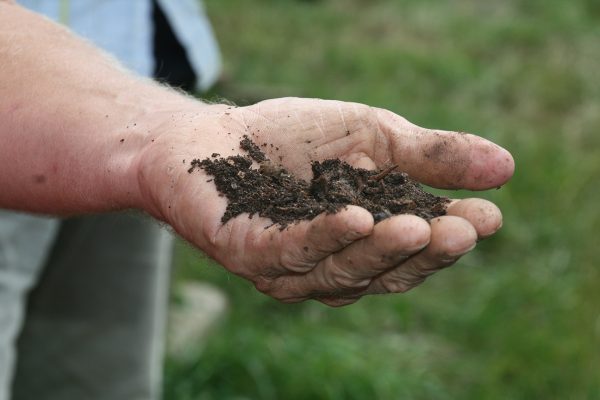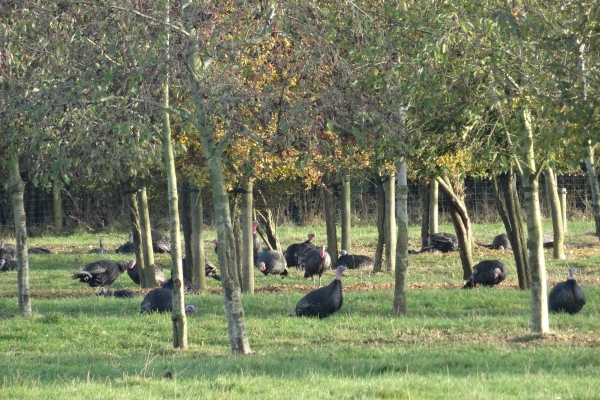Agroforestry and using woodchip to improve soil health
We all know compost is good, right? Most of us also know that it is almost impossible to get enough good compost from our own holdings. This has led a lot of us to go out looking for alternative sources. The two main ones have been farmyard manure and green waste compost. In recent decades it has usually been possible to get hold of manure, and many organic farmers have relied on this external source (often from non-organic farms) to boost their organic matter. There is however increasing recognition by the wider farming community that manure is a valuable resource and so it is becoming scarcer and more expensive. Green waste compost is readily available in many parts of the country, and often cheap or even free (carriage can be expensive of course). However there are some potential issues with using this, mainly contamination concerns around the selective herbicide clopyralid and plastics.
Falling for the composting myths – the fungal jungle
Many of us are interested in the role that good fungal populations can play in soil health. We also know that almost all plants (except brassicas) form specific relationships with mycorrhizal fungi that can help them grow and thrive. For these fungi to do well they need a good supply of ligneous material in the soil. This means adding woody material.
If you like I have been a little nervous about adding wood to soil, perhaps it is because we have fallen for the twin myths that:
- According to the composting mantra, you must have a good balance of green and brown material. Of course this is not without some truth, but I have seen many examples of how easy it actually is to compost woodchip. For example the Innovative Farmers Field Lab that Iain Tolhurst (Tolly) ran.
- And secondly that you can’t add woody material to the soil without locking up nitrogen. If you use well composted woodchip that is already well infected with fungi then there is almost no risk of nitrogen lock up. There is even evidence that adding un-composted ramial woodchip (in other words the smaller bits that you might get from hedge trimmings that contain less developed lignin) gives a benefit to soil health and yields.1
Where to get the woodchip from?
So let’s assume I have managed to convince you how great woodchip is. Where can you get hold of the material?
One obvious source is tree surgeons. Tolly and others have managed to work well with local arborists and taken their woodchip from them (which is often a problem for them to dispose of) to use on their farms. However this won’t work for everyone. Longer term, should we be looking at harvesting woody material from unproductive areas of a farm or even the country, and applying them to our most productive land to boost yields and improve soil health?
If you want to produce your own woodchip how can you do it? Most farms have some hedges or woodland on them. New machines designed to gather and chip the material as hedges are trimmed are I think being developed. Working out how best to use this will depend on different farm situations but there is definitely an opportunity there.
Seeing the wood for the trees
Taking it to another level though could we be specifically planting trees on our farms to supply woodchip for soil health? This ties in with the growing interest in agroforestry in the UK. When studying the economics of multi-crop systems there has been a tendency to focus on more tangible outputs such as fruit crop, timber or biomass. This is of course natural, planting trees is an expensive business and most farms need to see a return on that investment. However if we could evaluate the financial and resilience benefits to a farm from “investing” that organic material back into the soil rather than exporting it as a cash crop, might more farmers feel confident in bringing more trees into their farming system?
Ben Raskin has a wide range of experience working with growers at all levels of production. He is currently Head of Horticulture at the Soil Association where he has worked for 10 years and managed a range of projects for farmers and growers. He also works freelance as a horticultural advisor and writer and is the author of ‘Compost a Family Guide.’ His own experience includes setting up and running the 10 acre horticultural production at Daylesford Organic Farm, before moving to the Welsh College of Horticulture as commercial manager.
Editor’s notes
- View the Field Lab Report ‘Peat-free woodchip compost for growing media‘ here.
- If you are interested in using woodchip for woodfuel have a look at ‘A guide to harvesting woodfuel from hedges.’
- For some more information about use of compost within organic systems in particular, see the following resources:
1Caldwell, B. Wood Chips in Vegetable Production















